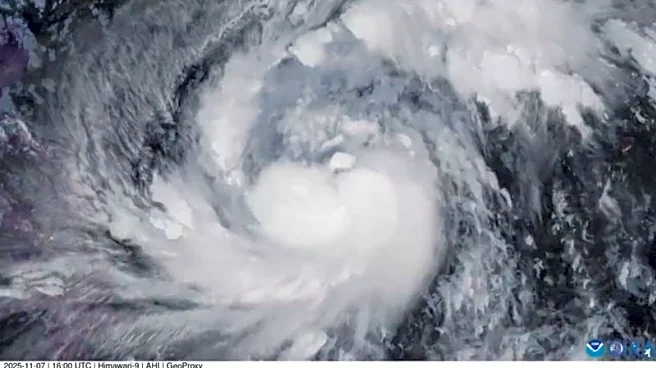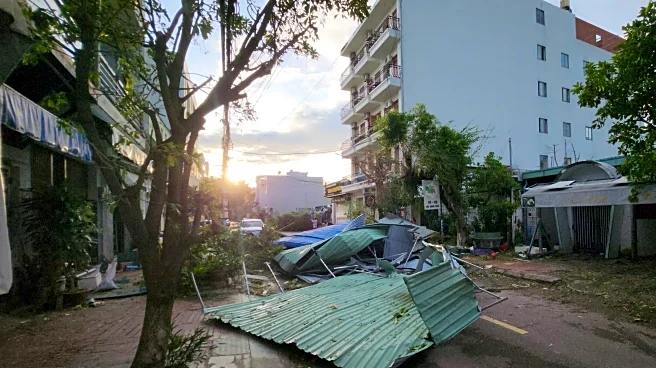What's Happening?
The Philippines is facing a significant threat from Typhoon Fung-Wong, which made landfall on the eastern seaboard of Luzon, the country's largest island. The government has categorized Fung-Wong as a super
typhoon, leading to the evacuation of over one million people across 12 regions. This comes less than a week after another storm resulted in more than 200 fatalities. The Office of Civil Defense has reported pre-emptive evacuations, and classes in metropolitan Manila have been suspended until Tuesday. The storm has already caused two deaths, one from falling debris in Samar Province and another from drowning in Catanduanes. Defense Secretary Gilbert Teodoro has urged residents to comply with evacuation orders to prevent risking the lives of emergency responders.
Why It's Important?
The arrival of Typhoon Fung-Wong poses a severe risk to the Philippines, a nation frequently affected by natural disasters. The mass evacuations and suspension of activities in Manila highlight the potential for widespread disruption and damage. The government's proactive measures aim to minimize casualties and ensure public safety. The typhoon's impact could strain resources and challenge the country's disaster response capabilities, especially following the recent storm that claimed over 200 lives. The situation underscores the importance of effective emergency preparedness and response strategies in mitigating the effects of such natural disasters.
What's Next?
The Philippines government is likely to continue monitoring the situation closely, with further evacuations possible as the storm progresses. Emergency services and military personnel are on high alert to assist affected communities. The focus will be on providing relief and support to displaced individuals and assessing the damage caused by the typhoon. International aid and support may be sought to bolster recovery efforts. The aftermath of the storm will require coordinated efforts to restore infrastructure and provide humanitarian assistance to those impacted.
Beyond the Headlines
The frequent occurrence of typhoons in the Philippines raises concerns about climate change and its role in intensifying weather patterns. The country's vulnerability to such disasters highlights the need for sustainable development practices and improved infrastructure to withstand future events. The situation also brings attention to the socio-economic challenges faced by affected communities, including displacement and loss of livelihoods. Long-term strategies for disaster risk reduction and climate adaptation are crucial to enhancing resilience and reducing the impact of future storms.













